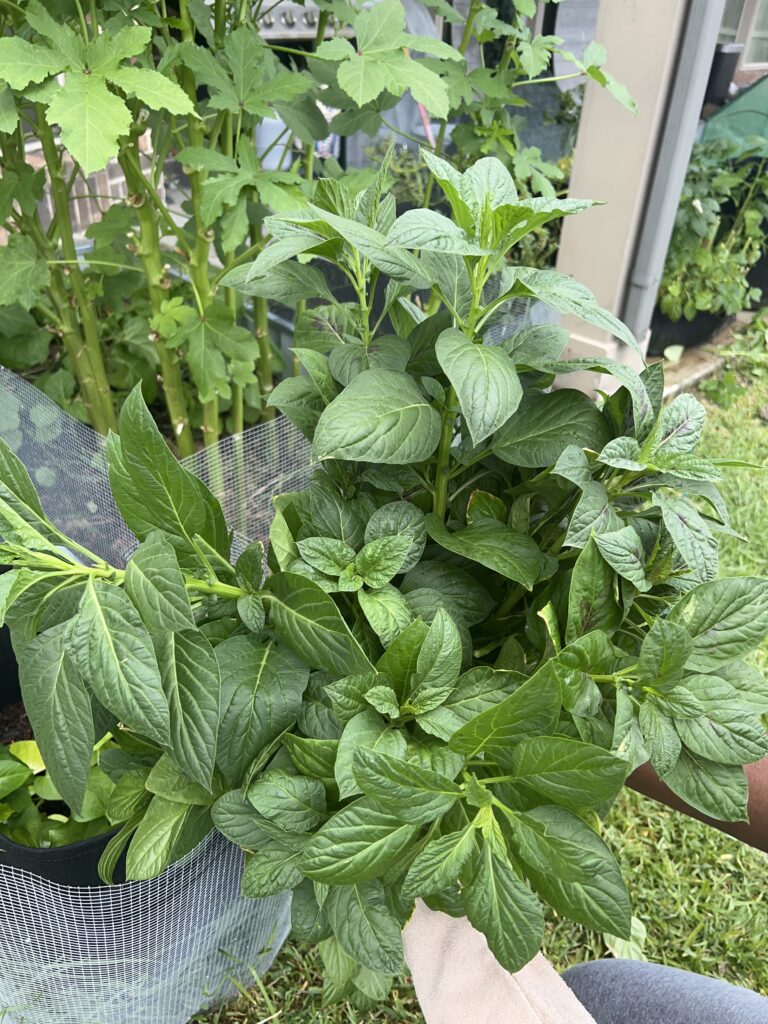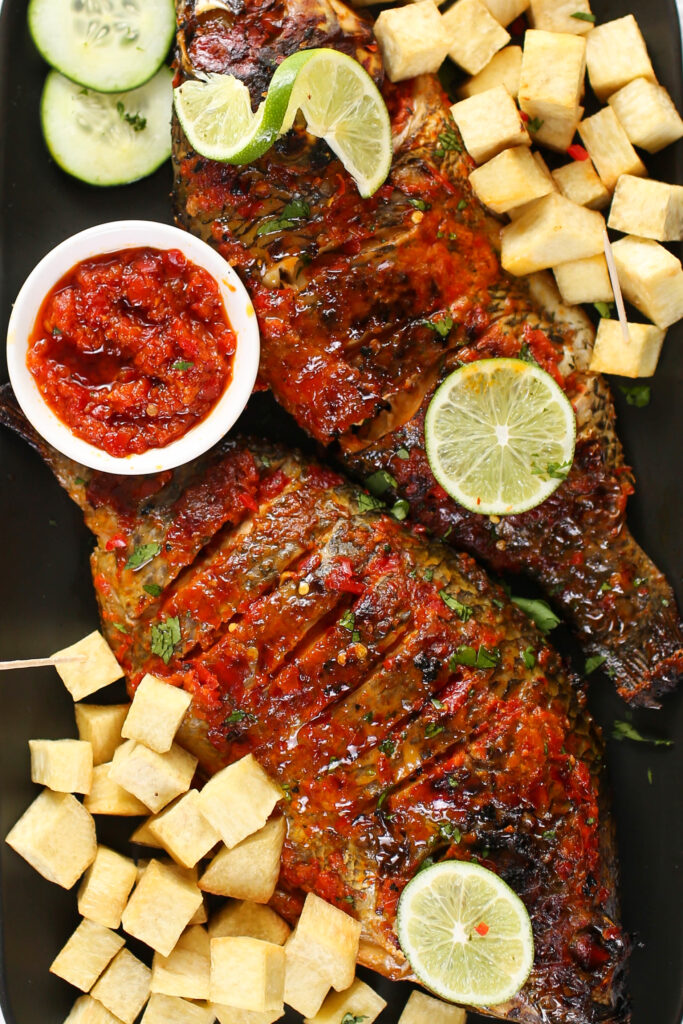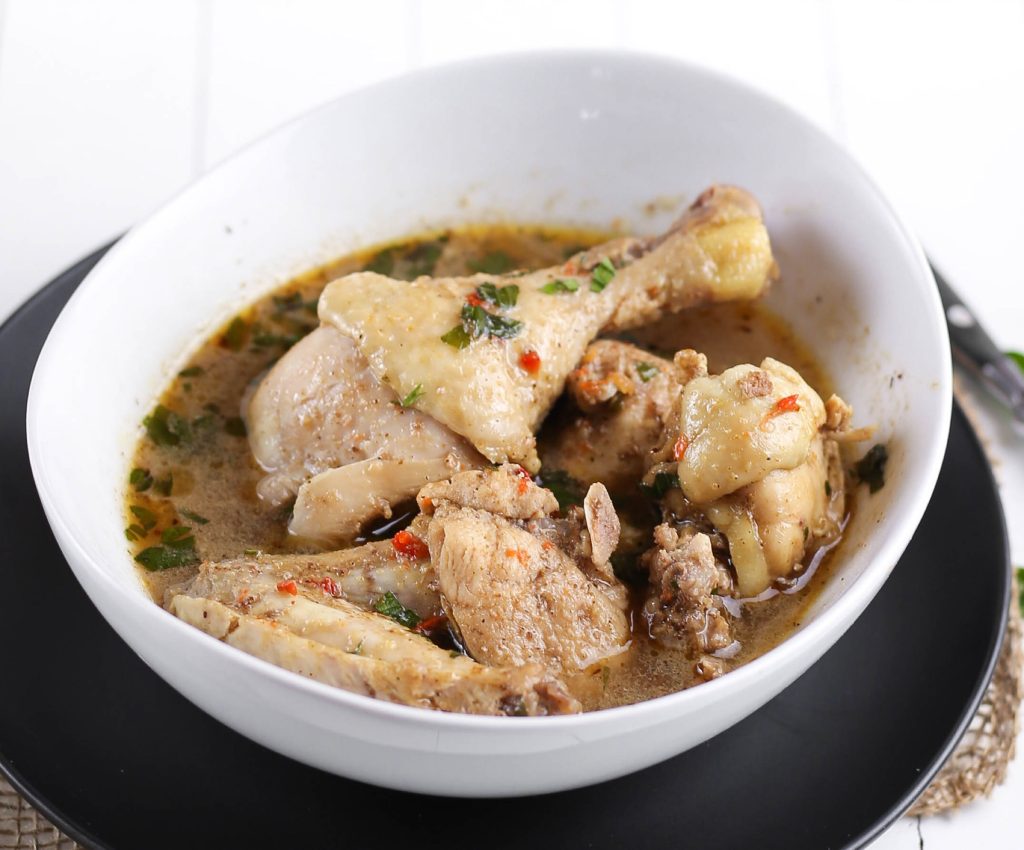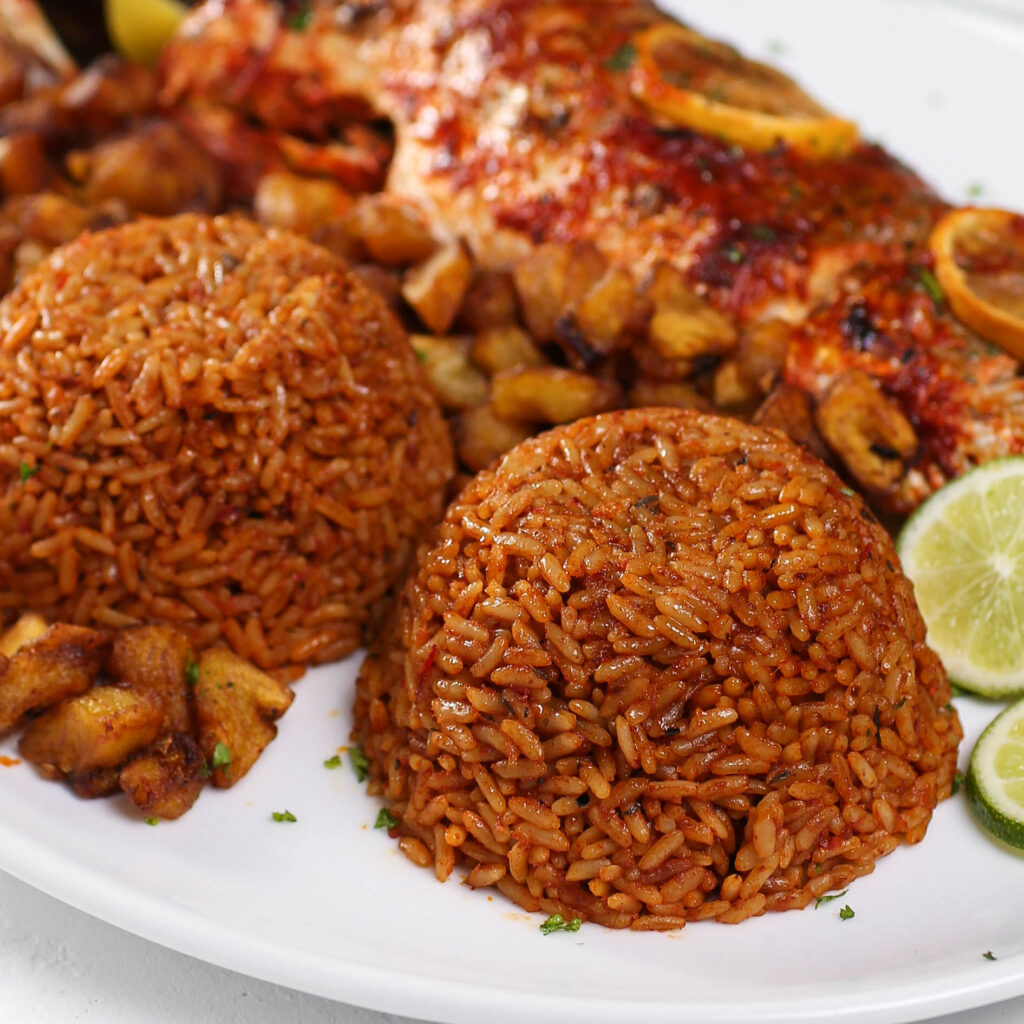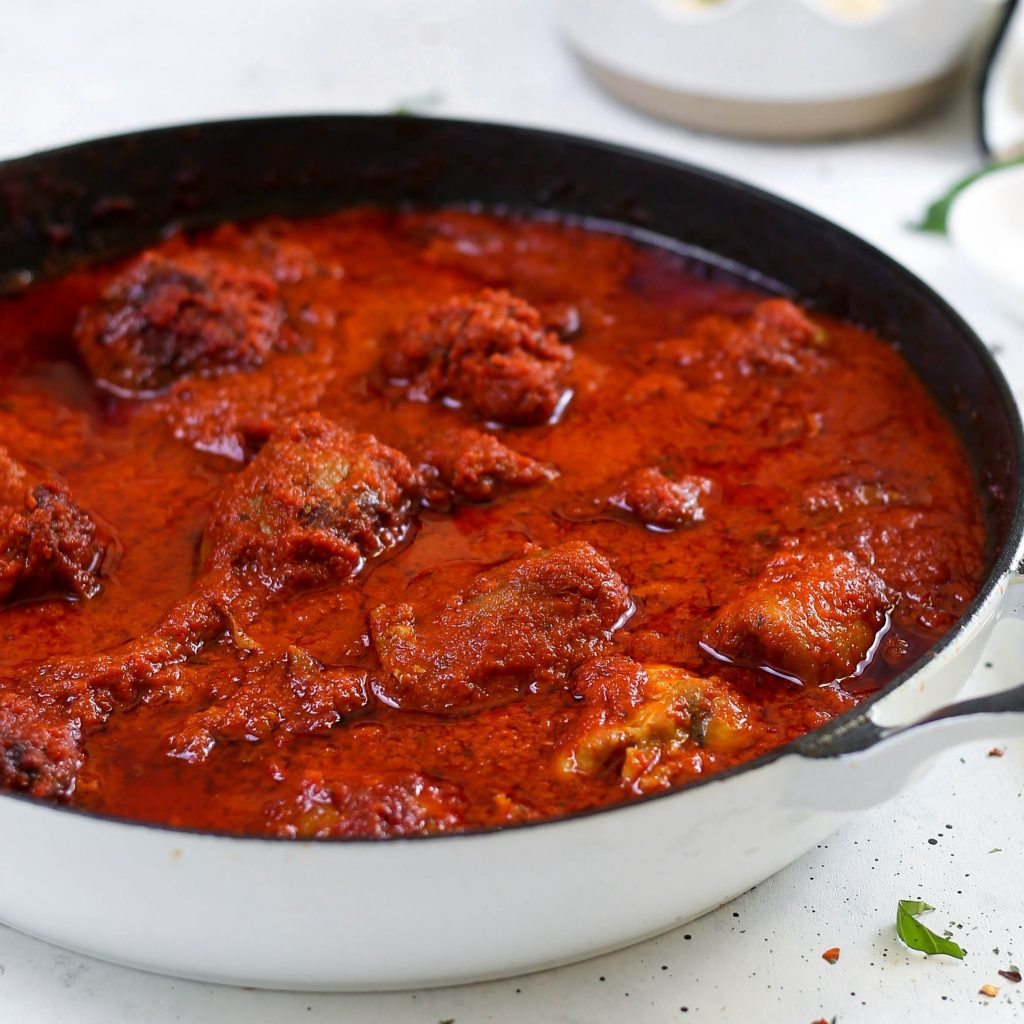Efo riro soup
I'm soup-er excited to share my love for Eforiro with you. This soup is not only healthy, it is packed with flavour and a rich aroma. It is perfect by itself, as a soup for swallow(fufu) or as a sauce.
Efo riro soup
I’m soup-er excited to share my love for Eforiro with you. This soup is not only healthy, it is packed with flavour and a rich aroma. It is perfect by itself, as a soup for swallow(fufu) or as a sauce.
What is eforiro?
Efo Riro is a leafy and delicious soup that originates from the Western region of Nigeria. It is famous not just for its taste but also its nutritional value boasting a rich array of vitamins, minerals, and antioxidants. It’s a great source of Vitamin A, C and K and supports immune, digestive and heart health. lt is often cooked with a medley of meats and fish and served on its own or with sides.
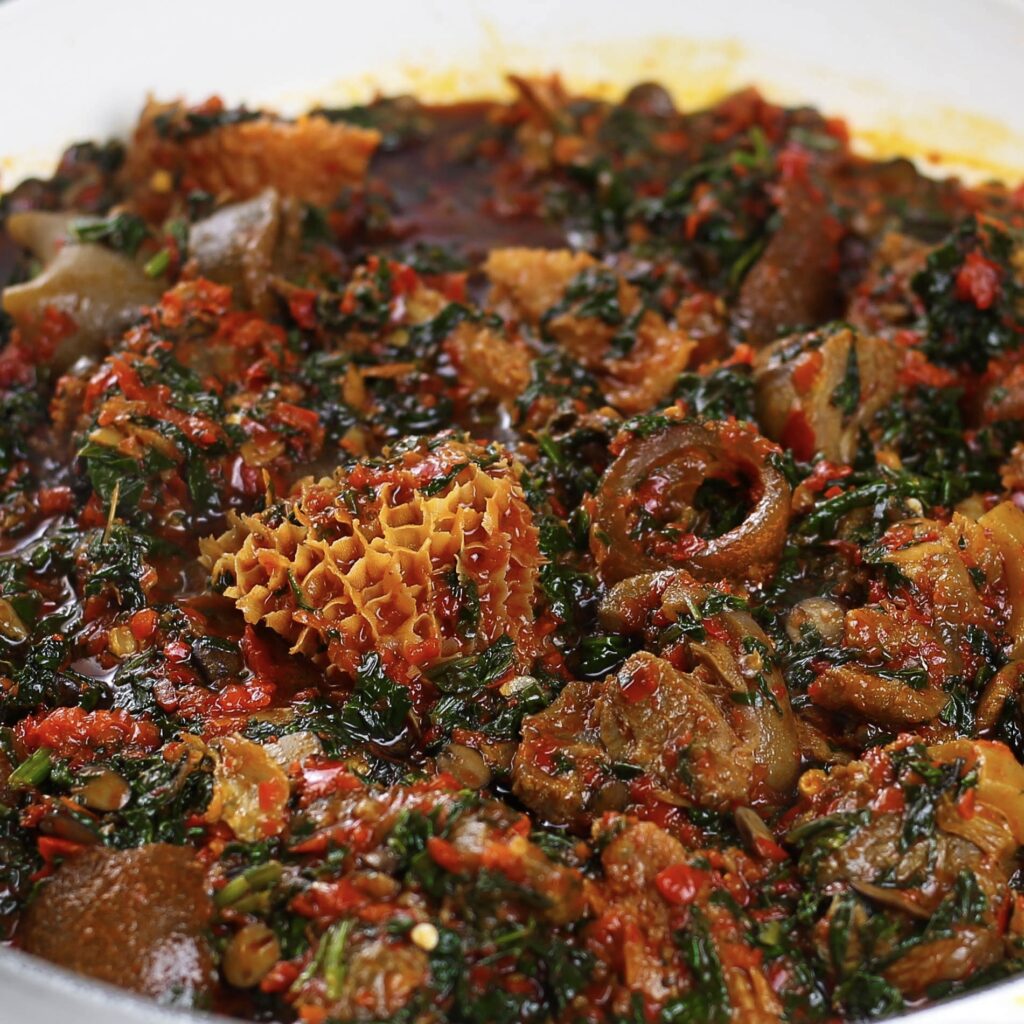
Main ingredients and Substitutions
Efo leaf: I use efo tete because it’s one of my favorite leaves. local alternatives include efo shako(Lagos spinach), green leaf, ugu leaf. If outside Nigeria and you’re unable to find these, you can substitute with kale, collard greens, Swiss chard or a combination of these as substitutes. For a milder taste, regular spinach can work, though the flavor might differ slightly.
Meats: I like a mix of meats such as goat meat, beef, kpomo (cow skin), and offals (shaki, and intestines) to give it richness and depth. If these meats aren’t available or preferred, you can substitute with ram, chicken, turkey, etc.
Peppers: Eforiro traditionally uses a blend of tatashe (or bell pepper) and Scotch bonnet peppers (atarodo) for the right balance of flavor and heat. When using tatashe or shombo, it’s important to remove the seeds and veins, as they can make the dish bitter.
To reduce the spice level, remove the seeds and stems of the Scotch bonnet, or simply use fewer peppers. If Scotch bonnet isn’t available, habanero peppers can be used as a substitute for a similar level of heat.
Seasoning: Seasonings like salt, iru (fermented locust beans), crayfish, and bouillon cubes (Knorr or Maggi) are crucial for developing the dish’s signature savory, umami-rich flavor. Crayfish and Iru can be found in most local Nigerian stores/ open market.
Crayfish can be substituted with dried shrimp powder, or you can leave it out if you’re allergic to shellfish. If you want a natural, less processed alternative to bouillon cubes, try using homemade broth or vegetable stock.
Palm Oil: Palm oil is a staple in many Nigerian dishes, contributing to eforiro’s rich color and flavor. If you need a substitute, vegetable oil or a neutral oil would work although it would affect the traditional taste and appearance.
Fish: Smoked fish and stockfish enhance the flavor with a rich, smoky depth. Smoked fish, like mackerel or dried smoked catfish, adds a distinct taste, while stockfish provides a chewy texture and a unique flavor. Make sure to soak stockfish in water to soften it before cooking.
How to serve: Soup-er hero or Sidekick?
Eforiro can be enjoyed on its own or paired with a variety of sides to create a satisfying dish.
Traditional options include Pounded Yam, Eba, etc, all of which compliment the dish beautifully. Yam, Sweet Potatoes, or Irish Potatoes also make excellent pairings.
For a healthier alternative, consider low-carb choices such as Oatmeal, Brown Rice, or Amala. These options provide a nutritious balance while catering to your dietary preferences. Whether you choose to enjoy Eforiro alone, with traditional pairings or healthier side, these combinations will create a delicious meal that showcases the versatility this meal.
simple steps to make it
Prepare your Meat
Wash and cut your meat into desired sizes and transfer into a large pot. Add your knorr seasoning cubes, salt and onions and allow to cook for 20-30minutes. In a separate pot, add shaki, kpomo, salt, onions and water. Allow to cook until tender.
Prepare your Fish
Fully immerse your smoked catfish in hot water and a sprinkle of salt to remove any impurities. After about 5 minutes, rinse and debone the fish. Soak your stockfish in hot water for about 30 minutes to release dirt and bugs. Rinse after 30minutes and set aside.
Prepare your Peppers
Blend your tatashe and peppers. The mixture should have a rough texture.
Prepare your Vegetables
How to prep the vegetables
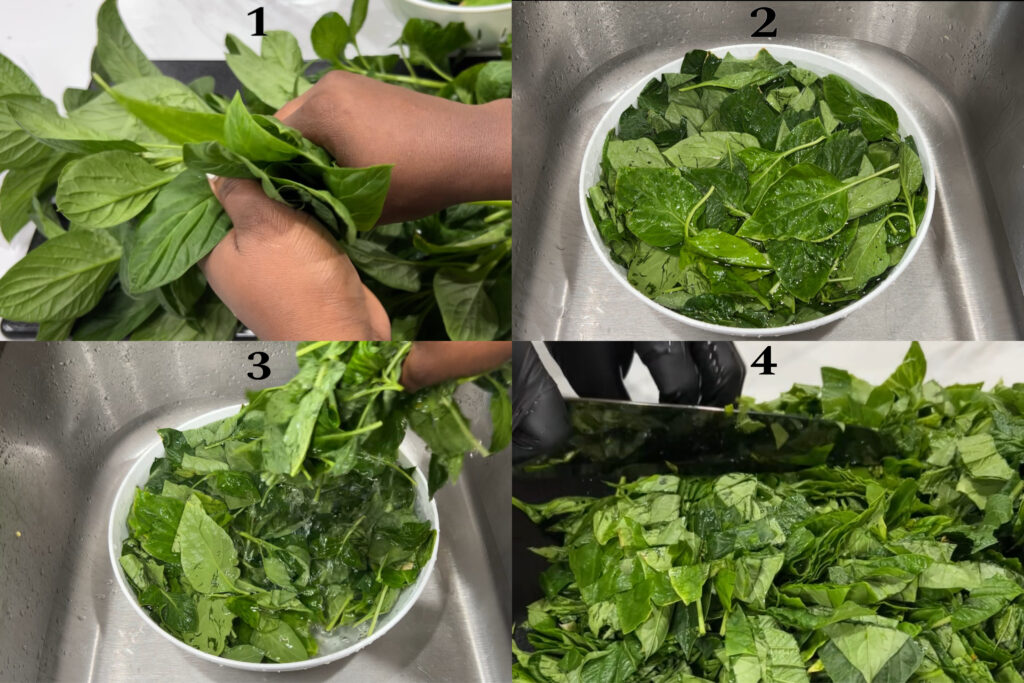
- Remove all the leaves from the stems.
- Fill a large bowl with water and rinse the vegetables, shaking them to dislodge any sand, dirt, or insects.
- Scoop the leaves out of the water, allowing any sediment to settle at the bottom. Make sure to remove any floating debris, such as sticks, dead leaves, etc. Repeat this rinsing process with clean water 2-3 times until the leaves are free of sand and dirt.
- Thoroughly drain any excess water and chop the leaves.
How to Blanch the Vegetables

- Fill a large bowl with boiling water and add the cleaned vegetables
- Mix the vegetables in the hot water and allow to sit for 1 minute and drain thoroughly
- Transfer the blanched vegetables to ice bath for 1 minute to stop the cooking process and cool completely.
- Mix the vegetables and drain the water
- Squeeze out any excess water from the leaves
- Cut into smaller pieces (optional).
benefits of Blanching
Blanching enhances the color and texture of vegetables, making them more visually appealing and tender. It is particularly useful when preparing vegetables for freezing, as it preserves colour, flavor, and nutritional value while reducing enzyme activity that causes spoilage.
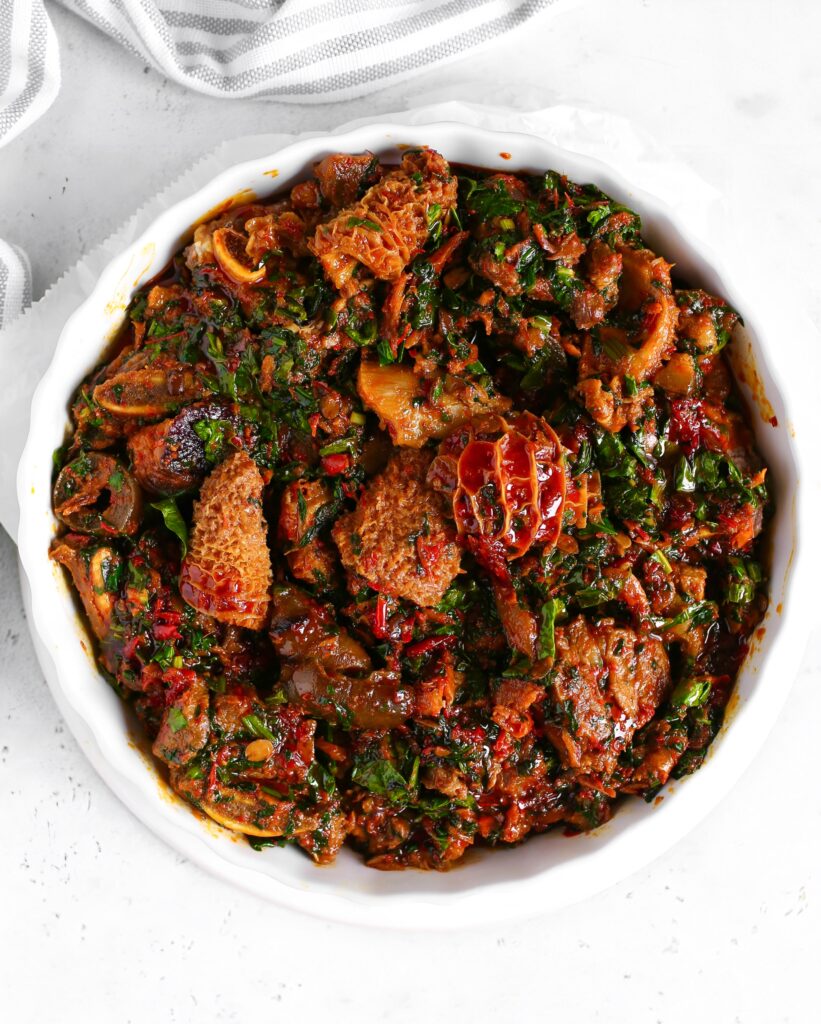
Why you’ll love this recipe
Nutritious: Rich in vegetables and proteins, Efo Riro is a wholesome and nourishing dish.
Customizable: Easily tailored to your taste, you can adjust the spice level and ingredients, making it perfect for any palate.
Flavorful: The blend of iru and crayfish adds a distinct depth of flavor that sets this dish apart.
Tips & tricks
To ensure your eforiro doesn’t turn too dark when cooking, consider blanching your vegetable (see note 1) before cooking.
When sourcing for goat meat, request for male goat if possible as it’s softer and has more flavour. Depending on your location, your goat meat may be tougher or softer, be sure to adjust cooking times to accommodate this.
Be sure not to skip frying the it and crayfish as it gives the soup its strong and pleasant aroma.
Watch how to make it
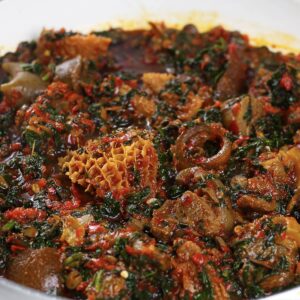
Ingredients
- 2 kg Goat meat
- 1 kg Beef
- ½ kg Shaki cow tripe
- ½ kg kpomo cow skin
- Smoked catfish fish to taste
- Stock fish flakes soaked in hot water for 1 hour
- 2 bunches fresh Efo shoko or spinach
- 3 medium tatashe
- 4-5 Scotch bonnet peppers adjust according to heat tolerance
- 2 Knorr beef cubes
- 1 teaspoon salt adjust to taste
- 1 medium chopped onion for cooking
- 2 tablespoons iru fermented locust beans
- 2 tablespoons crayfish
- ½ cup palm oil
Instructions
- Chop up the vegetables and set aside. You can Blanche your vegetables if you’d prefer (see note 1)
- In a pot, combine the goat meat and beef, add onions, salt, beef and chicken seasoning to taste and allow to boil for about 20-30 minutes.
- In a separate pot, add the shaki and kpomo with the seasoning cubes, add just enough water and a handful of chopped onions, 2 Knorr beef cubes, and salt. Bring to a boil, then reduce the heat and simmer until the meats are tender. You can discard this stock as it usually has an unpleasant aroma.
- Once the meats are cooked, add the cleaned stock fish flakes and smoked catfish to the pot(see ingredient preparation above on how to clean). Let it simmer for another 10-15 minutes.
- Roughly blend your tatashe and paper. Set aside.
- In a separate pan, heat the palm oil and add your iru, onion and crayfish. Fry for about 5 minutes to release the aroma.
- Add your roughly chopped pepper mix and cook for about 10-15 minutes on medium heat. Add salt and seasoning cubes and fry until the oil starts to separate from the pepper.
- Add in your cleaned catfish, cooked stock fish, kpomo, goat meat and beef. Add in the meat stock, mix and allow to simmer for about 5 minutes. Taste and adjust seasoning if needed.
- Add your cleaned vegetable to the pot. You can more or less depending on your preferred ratio of sauce to vegetable. Stir and cook for 2-3 minutes until cooked.
- Taste the soup and adjust the seasoning if necessary. You can add more salt or seasoning cubes if needed.
Notes
Did you make this recipe?
Tag, mention or DM @kikifoodies. I would love to hear from you!
kiki’s diary
Check out this large bunch of efo I harvested. I’m planning to blanch and freeze it for future use.
